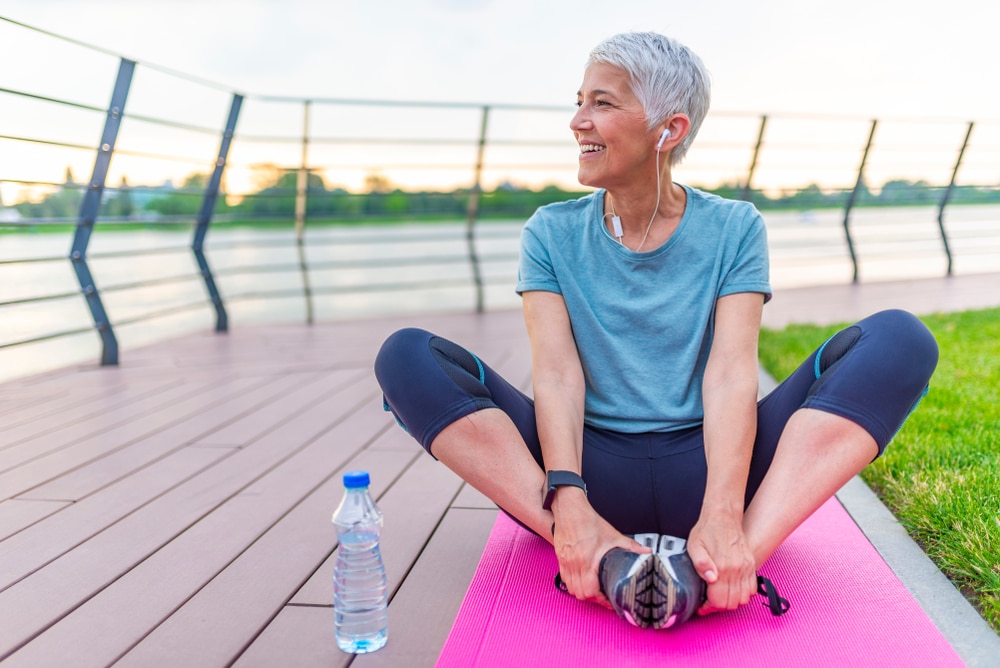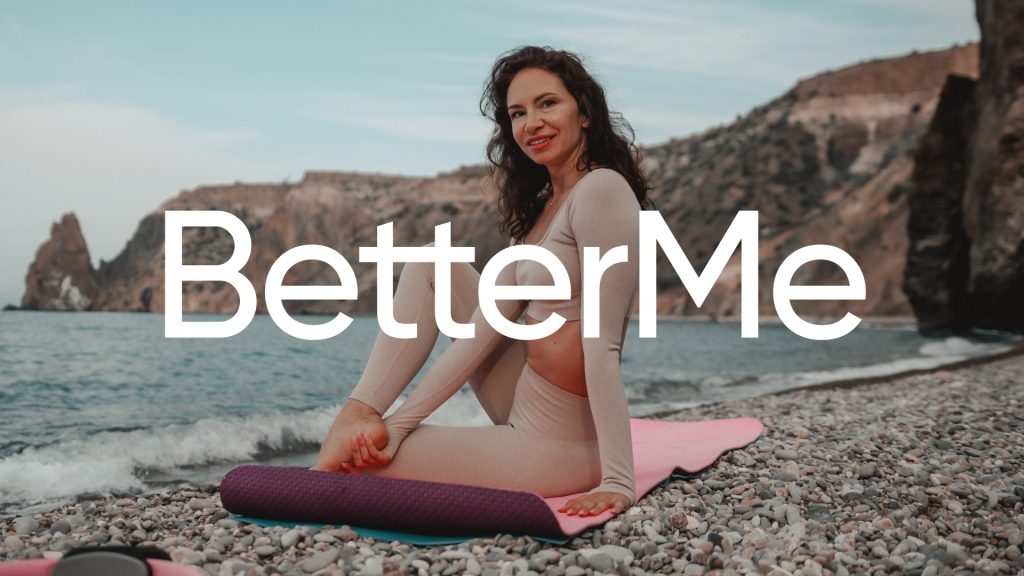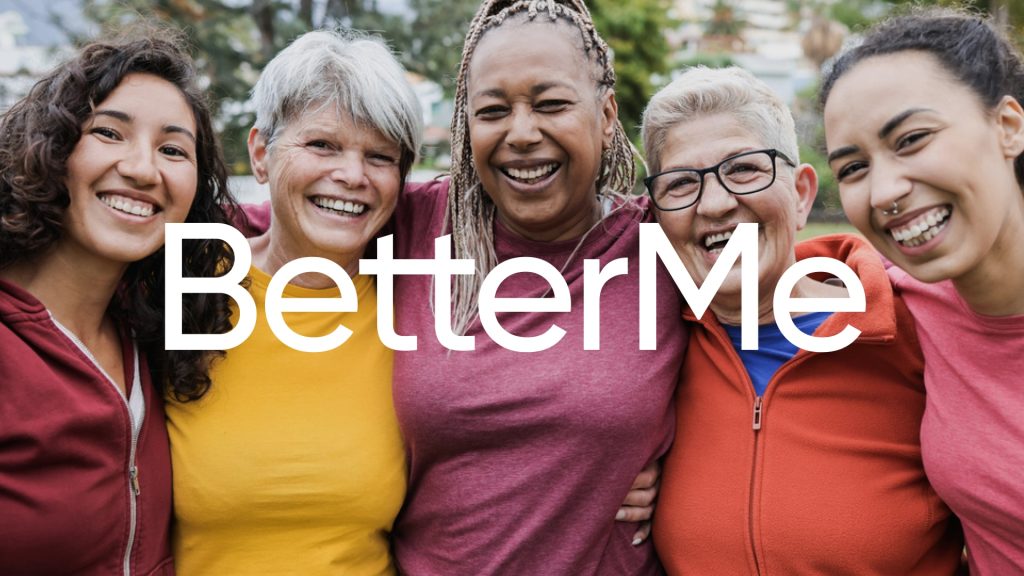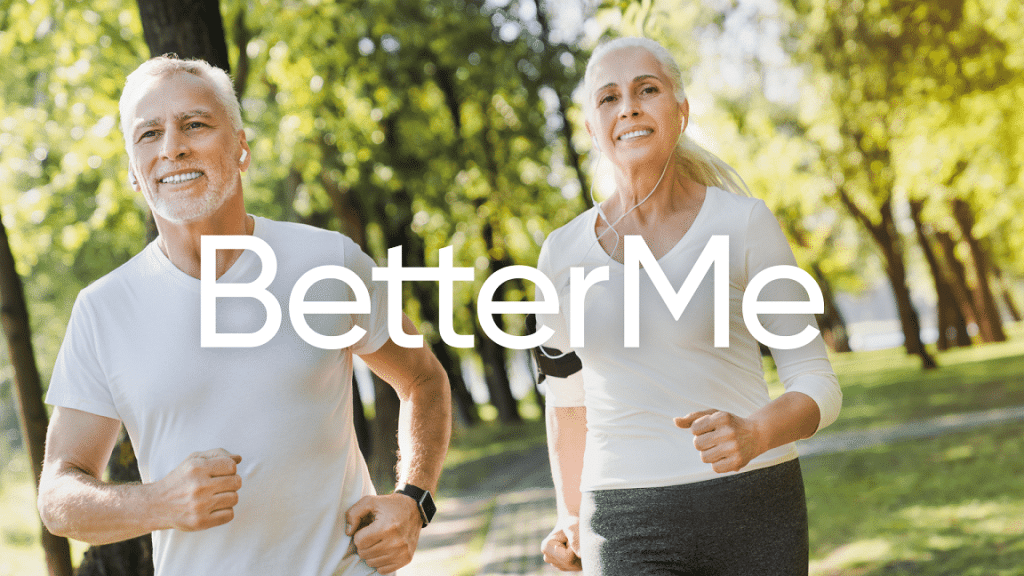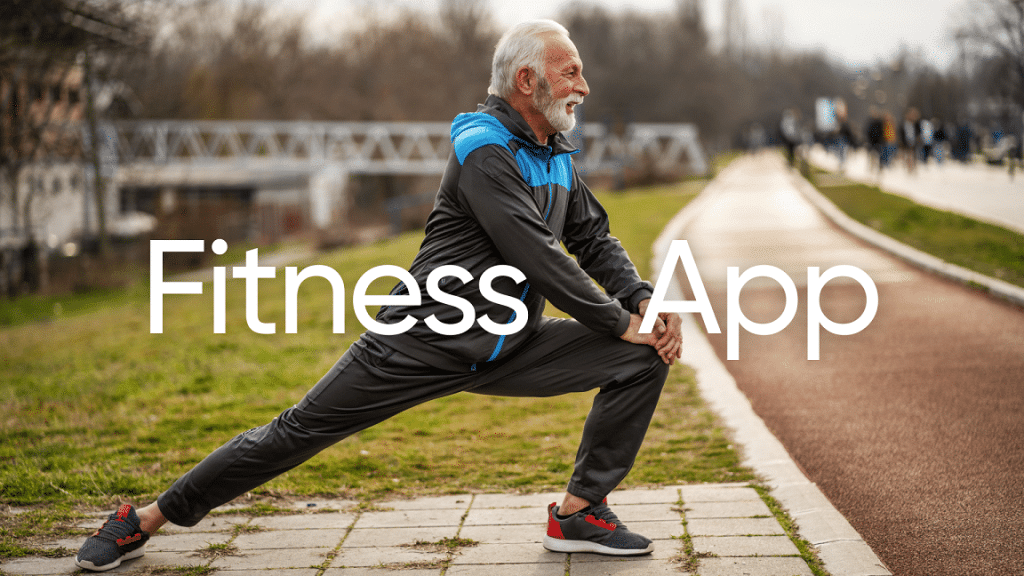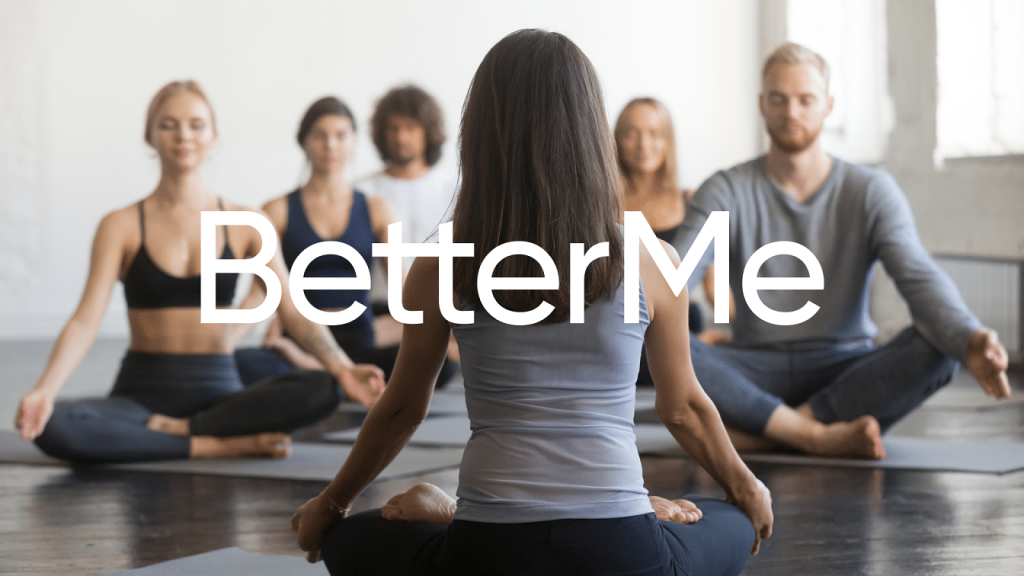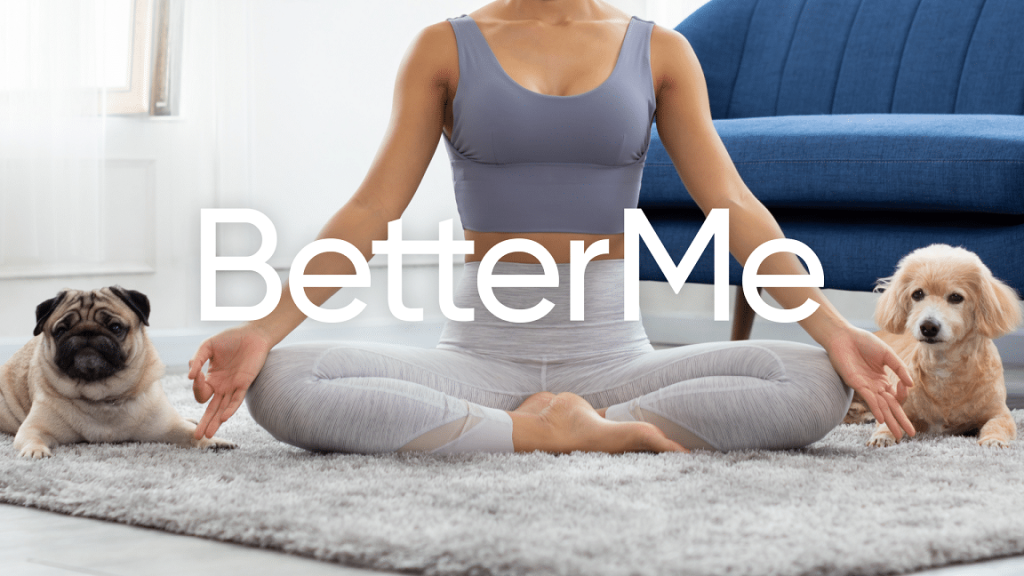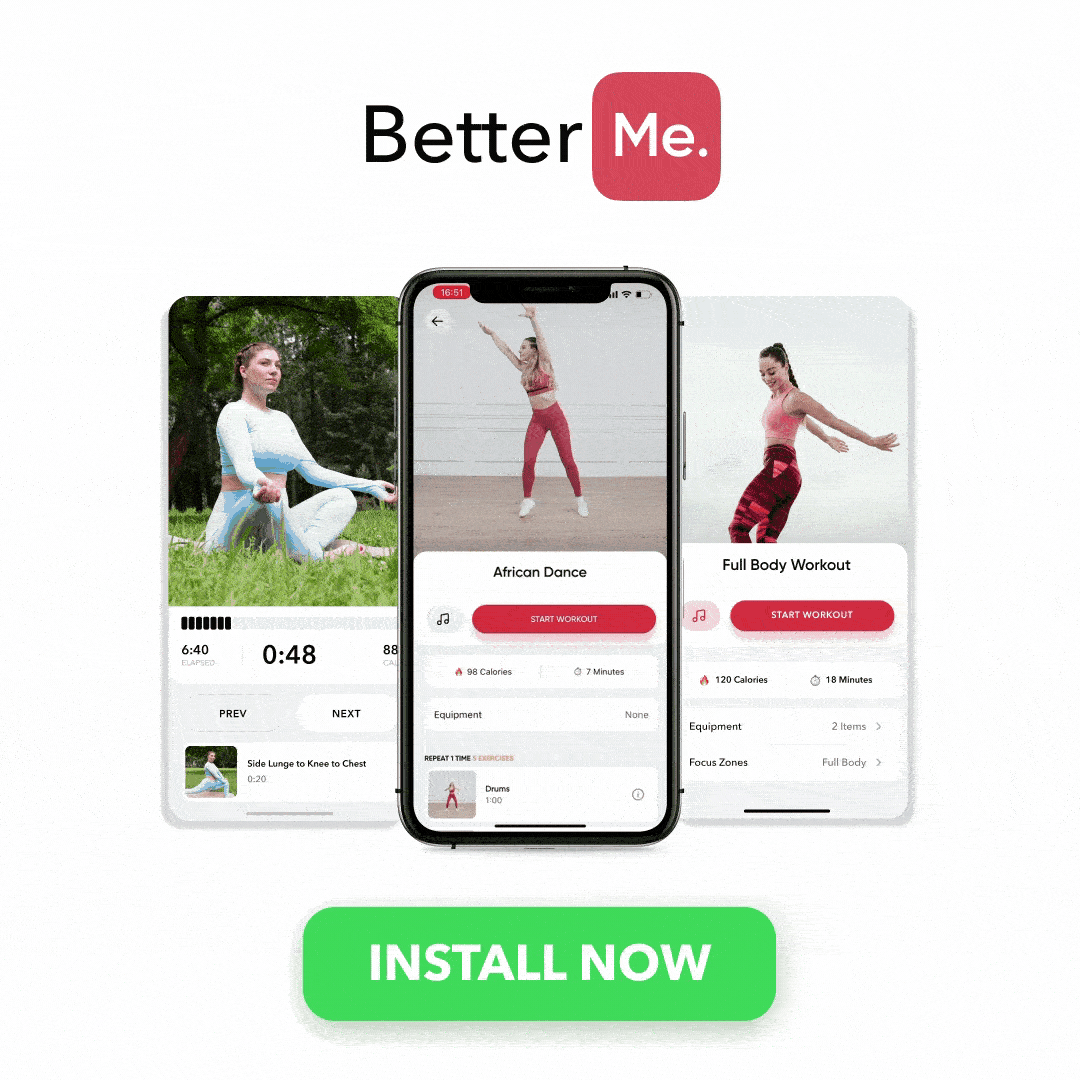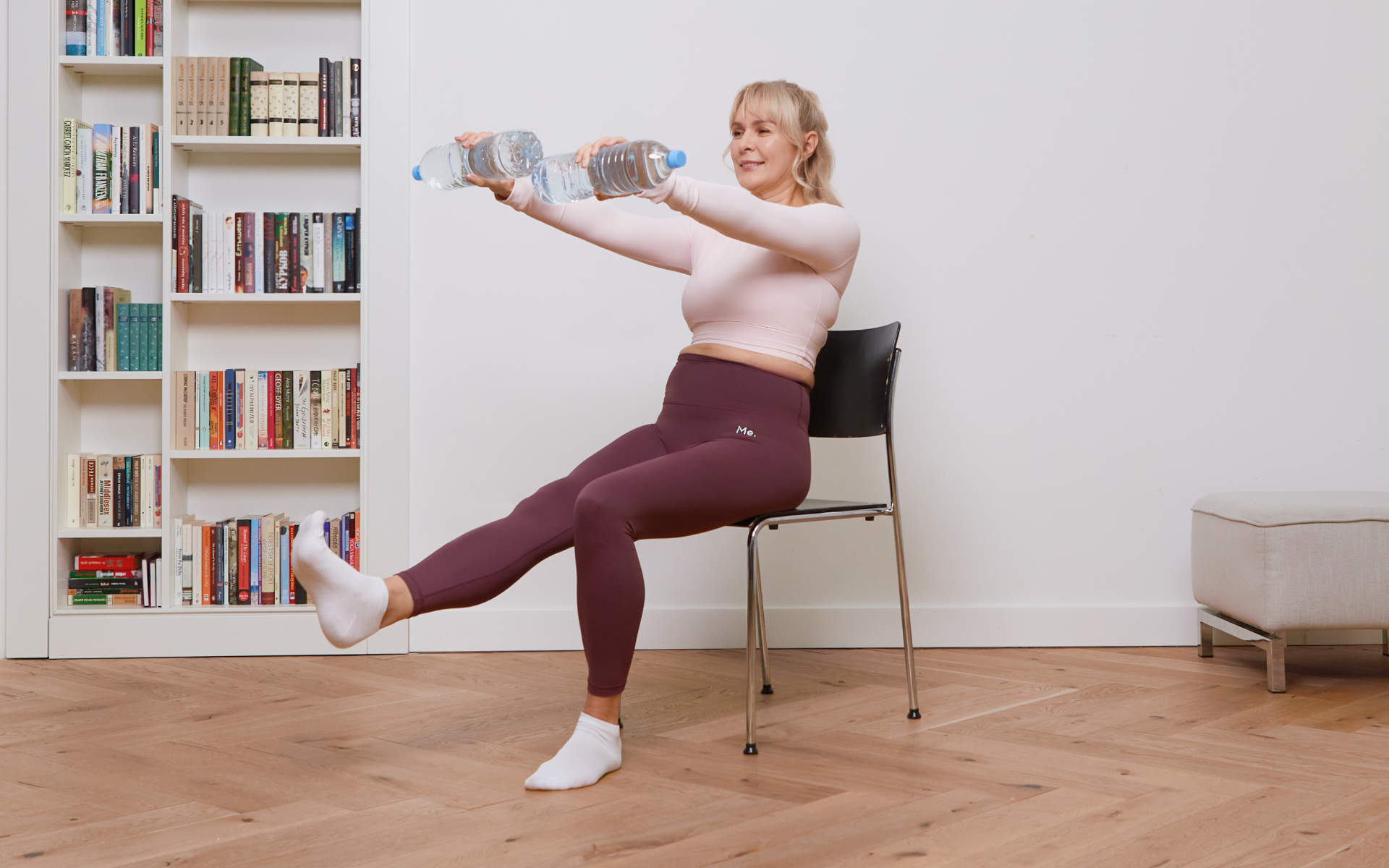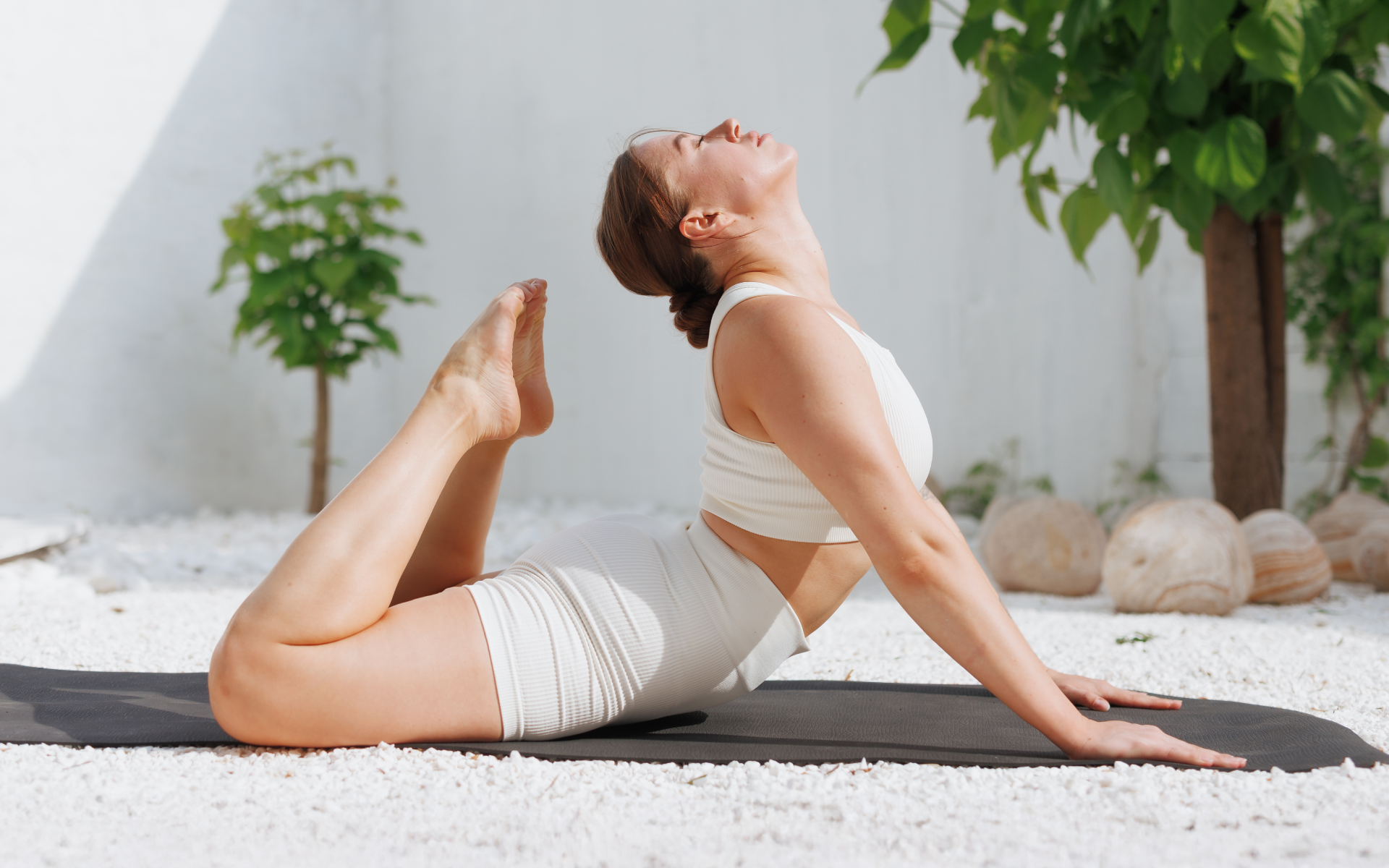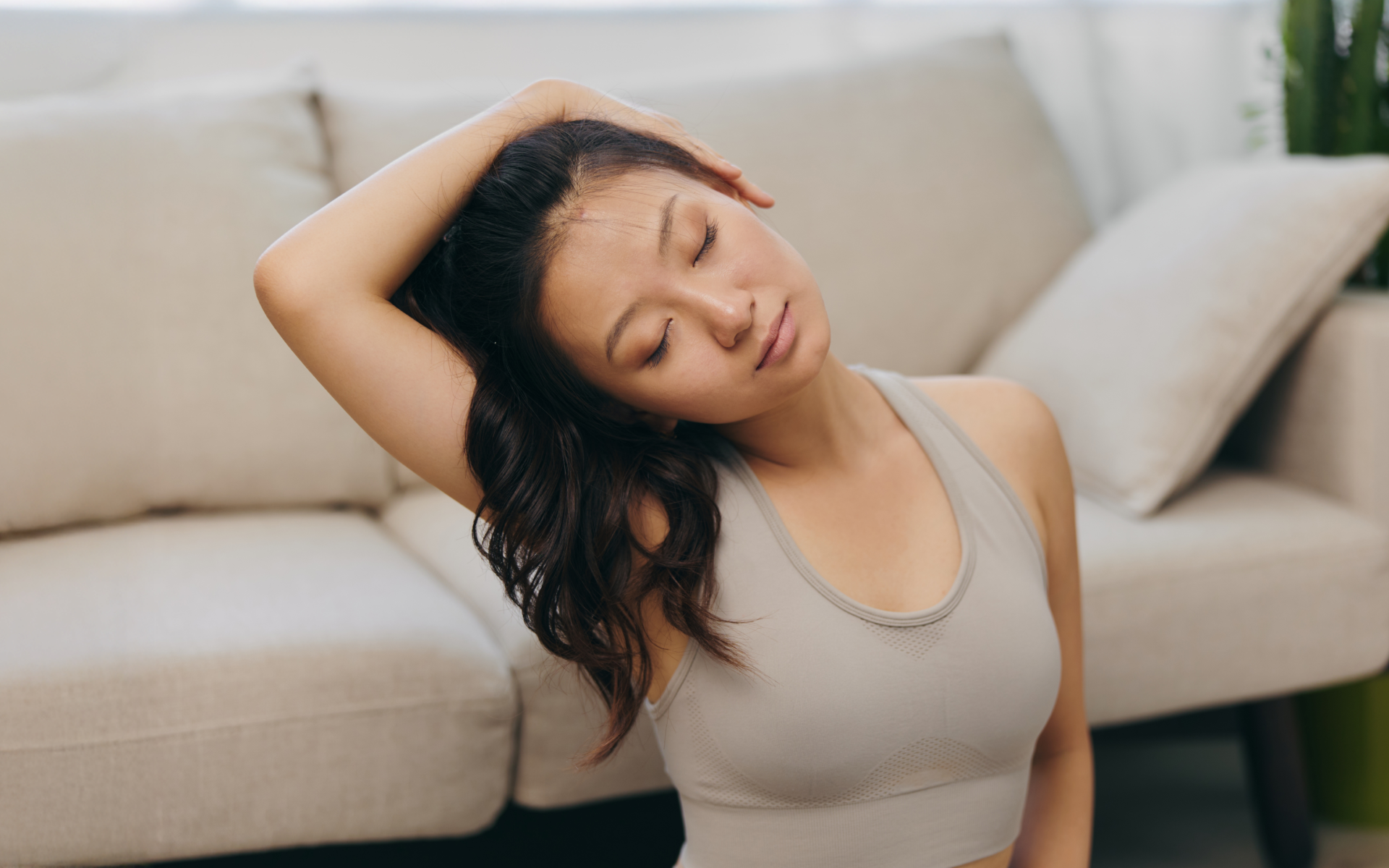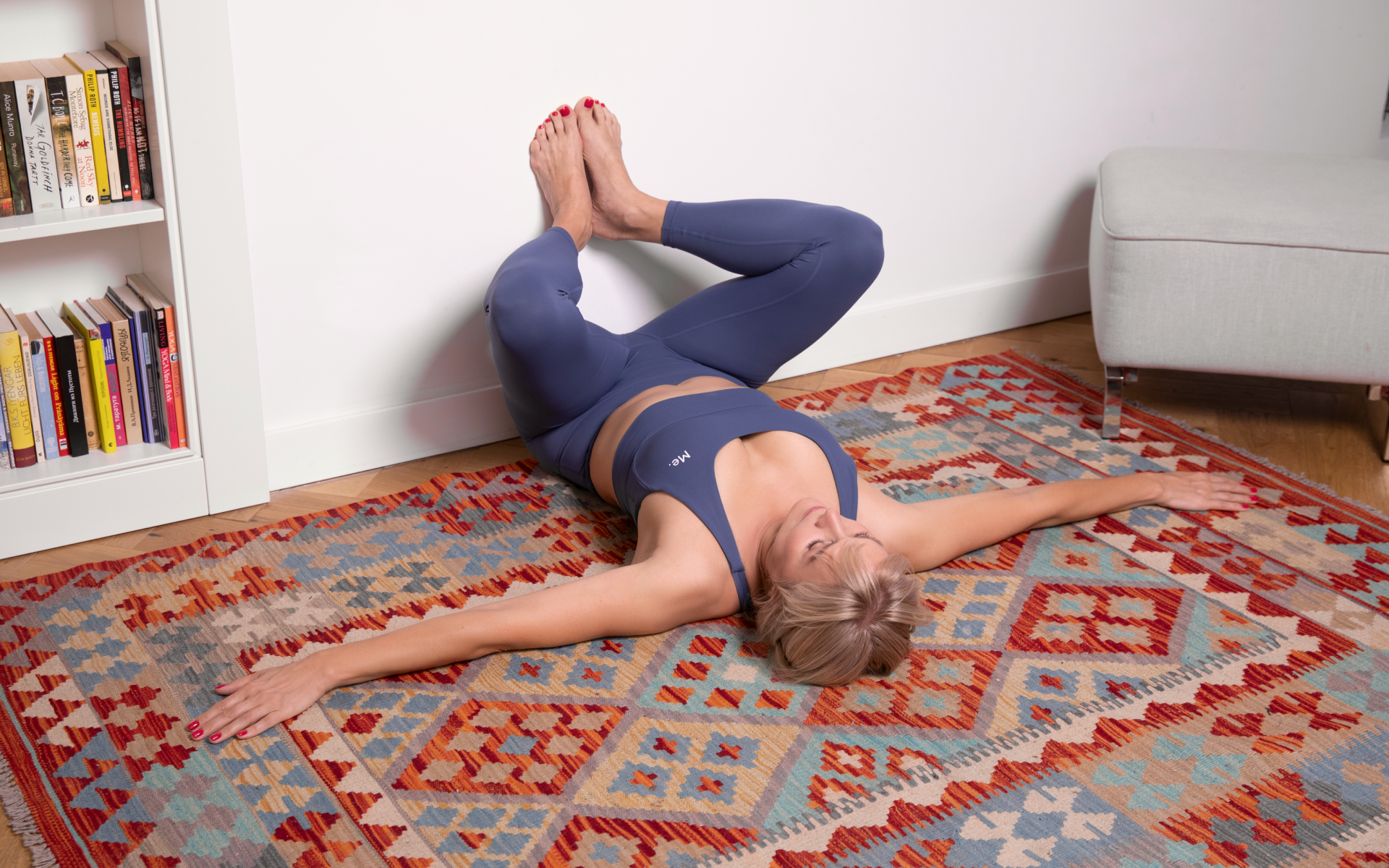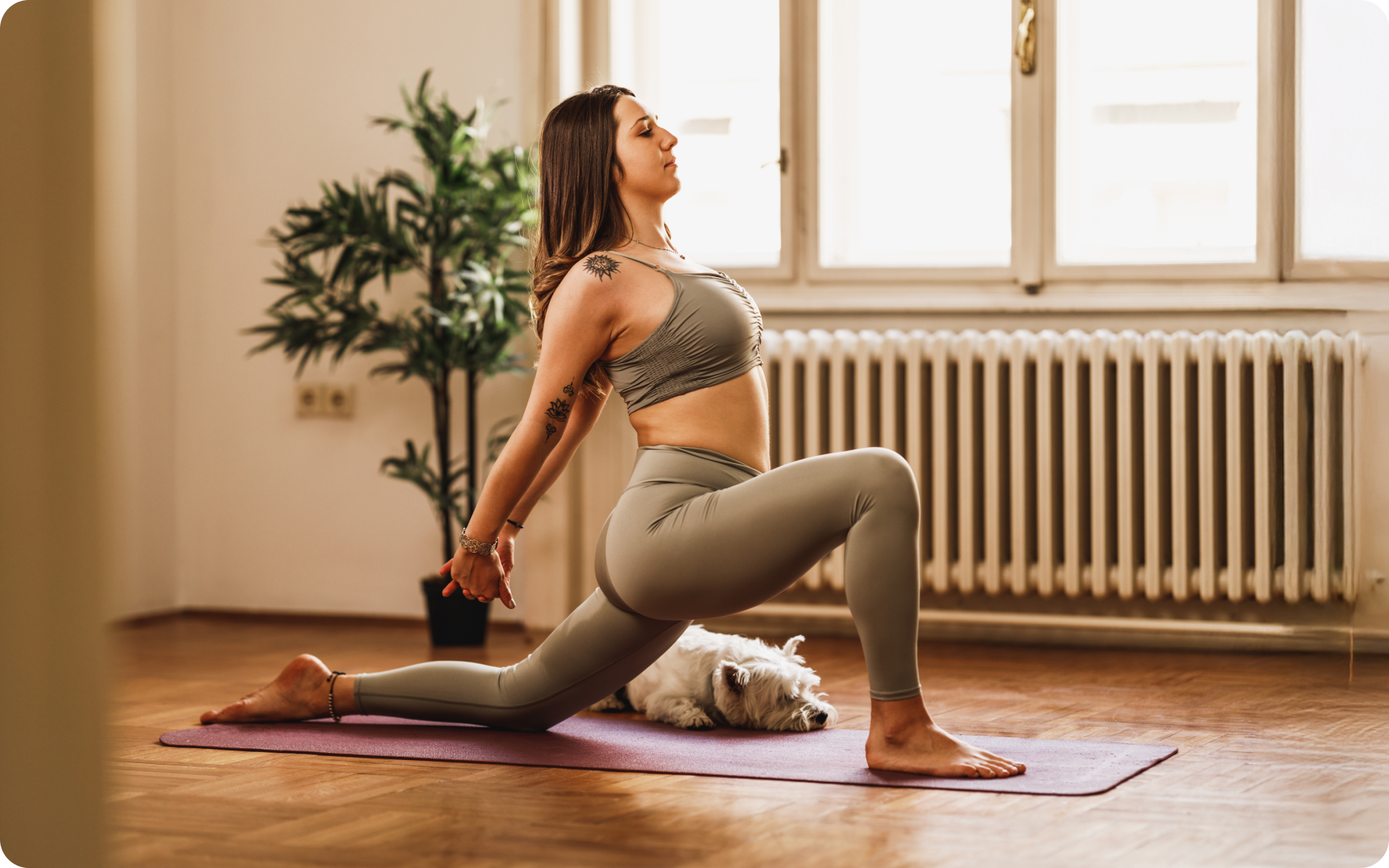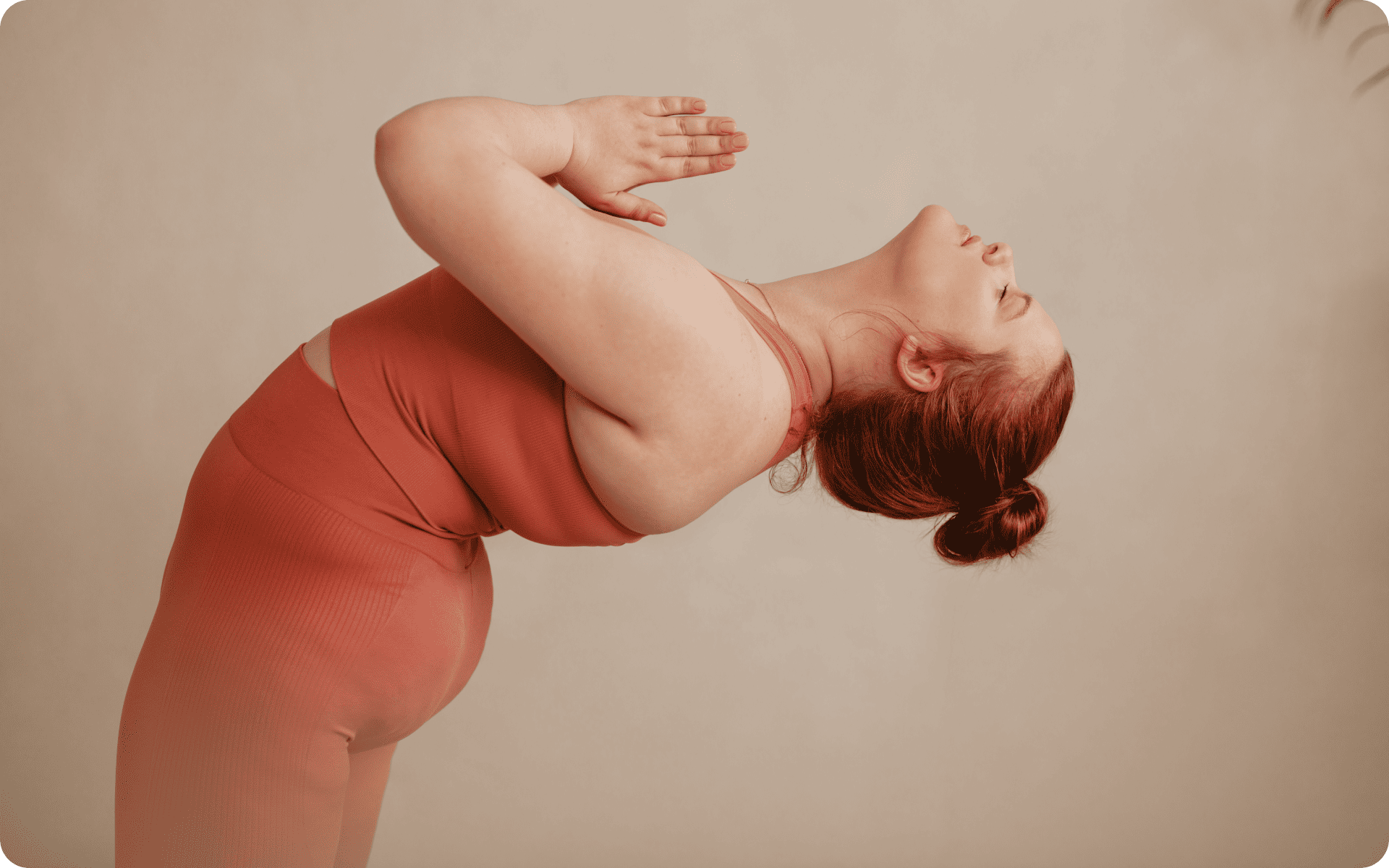The typical picture painted by yoga is a young, flexible person comfortably twisted up like a pretzel. You may be surprised then to find out that the Yoga in America Study by Ipsos Public Affairs revealed that about 14 million Americans over 50 years old practiced yoga in 2016 (1). This confirms that older and less flexible people can enjoy the practice of yoga and reap maximum benefits from it. Seniors may include yoga in their routine to relieve stress, clear the mind, and strengthen the body. Here is a take on what there is to know about beginning yoga for seniors.
Get your personalized
meal plan!
Yoga has no age limit. It is adaptable to different populations with diverse physical abilities and needs, making it an ideal exercise for beginning seniors who want a slow and mindful practice to relax and enjoy the other benefits that come with it. Furthermore, if you cannot attend yoga class regularly, you can learn how to start practicing yoga at home with the help of audio and visual materials that are approved.
Beginning Yoga For Seniors: Comprehensive Guide
Is yoga for beginning seniors appropriate? Yes, as long as you get a green light from your doctor (2). After many years of hectic work schedules and parenting, one may only have time to enjoy activities like yoga after retiring. It is certainly not too late to learn yoga for beginning seniors, so embrace this healthy habit that may promote longevity and boost your quality of life.
Types Of Yoga For The Elderly
The type of appropriate yoga will depend on your age, fitness level, and physical ability. Some of the yoga types recommended for senior beginners include (8):
-
Hatha
This is a generic term referring to all forms of yoga that concentrate on physical postures, typically about stretching and breathing and not increasing heart rate or being extra flexible. Mostly, hatha yoga classes feature a slow-paced series of sitting and standing poses, making it appropriate for beginners, especially the elderly.
-
Iyengar
This is a methodical and precise type of yoga that emphasizes proper form. Here, you are encouraged to use props such as bolsters, straps, blocks, and incline boards to help you get into the correct alignment. Since the props permit all kinds of adjustments and modifications, Iyengar is a good style of yoga for seniors with arthritis or other chronic illnesses.
Read More: Yoga Poses For Flexibility: You’ll Be Twisting Yourself Into A Human Pretzel In No Time!
-
Restorative
Restorative yoga, designed to release tension passively, without stretching, is a slow, meditative type of practice. It is, therefore, suitable for seniors that want to cultivate contentment and relaxation, and one may even fall asleep in class. Props may be used for support, and poses can last as long as 10 minutes.
-
Yin
Yin yoga is another type of slow yoga. It concentrates on holding poses for a long time, and the focus is on stretching your deep connective tissues. Seniors may be relieved from stress and improve their flexibility by doing Yin yoga regularly.
-
Vinyasa
Vinyasa generally refers to yoga styles involving matching breathing with a series of ongoing moves flowing from one to another. Although the pace varies with the participant’s physical activity level, the routines are often quick and fluid. At times likened to dancing, this type of yoga focuses on both the transitions between postures and the poses themselves. Vinyasa is physically vigorous, and therefore tough, but beginning seniors who are fit may try it with the help of a qualified yogi.
-
Ashtanga
Ashtanga is a fast-paced, intense, and physically challenging acrobatic yoga. It is made up of a predetermined set of steps performed similarly every time. It improves the heart rate and circulation of blood, and although not recommended as beginning yoga for obese seniors, may aid participants to lose considerable weight.
-
Kundalini
You must have come across the term Kundalini, which refers to the “yoga of awareness.” This is appropriate yoga for seniors interested in yoga’s spiritual and physical components as it combines physical postures, breathing exercises, meditation, and chanting.
Other options for seniors include chair yoga and water yoga.
-
Chair Yoga
If you are not comfortable doing traditional up-and-down yoga moves, you can opt for non-traditional options like chair yoga. Chair yoga for seniors with mobility or balance issues is as beneficial as yoga done on floor mats, only that the poses are modified to suit the participants’ needs.
How To Prepare For Yoga For Beginning Seniors
You need to prepare well before engaging in yoga. Here are the essential things to help you get ready.
Check Your Physical Status
You must evaluate your physical condition to know the appropriate moves for you. Some yoga moves are not recommended for people with particular medical conditions or seniors. For example, inverted or head-down poses are prohibited if you have glaucoma because they can increase pressure on the eyes. Therefore, talk to your doctor and instructor before attempting even the simplest yoga poses.
Collect Appropriate Gear
You cannot go farming without the right equipment. Similarly, beginning yoga requires you to have the right gear. For example, one should have comfortable, fitting, stretchy clothes (leggings or jogging pants, or fitting tank tops or t-shirt) which will not interfere with the poses. Options like a fitted yoga bodysuit for gentle practice or a lightweight one-piece jumpsuit can make the experience even more comfortable and beginner-friendly. Since yoga is performed barefoot, you do not need special footwear, but you can have non-slip socks or sneakers.
Besides clothing, you need a yoga mat if your studio does not provide it free of charge or for hygiene purposes. The mat should be long enough to support your entire body even when you lie down. It should be sticky enough to prevent slipping when you try to hold a pose. Pay attention to the material that the yoga mat is made from. Although PVC is the most common option, you can choose rubber, jute, or cotton-made mats if you prefer eco-friendly substances. Also, the mat’s thickness should offer enough support for sensitive joints and make balance poses easier and easy to carry.
Want to build an attention-grabbing bubble butt, blast away fat that’s stored in all the wrong places, spring-clean your diet, turn back the clock on your skin, skyrocket your self-confidence and shatter your insecurities? Check out the BetterMe app and set this plan in motion!
Get A Qualified Instructor
Find a trained yoga teacher who has experience working with seniors. You can check the list of yoga experts in America from the Yoga Alliance or Yoga for Seniors directories, among other alternatives (5) (6). Inquire from the possible instructors the length of time they have been working and if they have ever worked with seniors like you physically and healthwise. You may visit one of their classes to see their teaching techniques before settling on one instructor. Tell the teacher about any illness you may have, such as high blood pressure and arthritis.
Begin Slow
Since you are a beginner, do not be afraid to take baby steps. Ease into the practice, and you will slowly become flexible. Take enough rest after each pose, and add new movements only when your body has fully adjusted to the current routine. do not be in a rush to try new complicated poses. Concentrate on your own pace and not on that of otherS. Do not stretch till it hurts, so feel challenged but do not strain. Always ask the instructor to modify any poses for you that you cannot do comfortably. You may use chairs, straps, blocks, or walls for extra support.
Beginning Yoga Exercises For Seniors
Is yoga stretching good for beginners? Yoga involves breathing, stretching, and meditation. The yoga poses are called asanas, and they can be adapted or modified easily to suit different needs. Therefore, the instructor can customize yoga stretches and beginning yoga poses for seniors that are good and safe for you.
Beginning Yoga Routine For Seniors
Beginners should understand basic yoga etiquette and beginner poses before progressing to advanced stages to avoid injury and learn how to do yoga correctly. This is best learned when you attend a class instructed by an experienced yogi and get answers to any questions you may have before following instructions on books and videos without supervision. Also, in-person sessions are great socialization platforms with people of the same age group or interests.
What are the easiest yoga poses for beginners? Now that you are well prepared, you can try basic yoga poses for beginners. Note that basic does not always mean easy, expect to challenge your mind and body.
You may listen or watch a few poses before class. Some of the beginning yoga poses include (2):
-
Mountain Pose (Tadasana)
Tadasana is the most basic or foundational pose that aids your balance and posture and is appropriate for seniors. It has a low impact and helps you concentrate on your breathing and be more aware of your body. Mountain pose may also reduce back pain. It is done by:
- Standing with feet hip-width parallel and apart.
- Place the arms straight by your side.
- Spread the toes, and press them into the floor while evenly distributing your body weight into both feet.
- Squeeze your thighs, engage your leg muscles, then align your head over your heart, your heart over your hips, and your hips over your ankles.
- Take a deep breath. Every time you inhale, lengthen your spine and reach the crown of your head towards the sky. Every time you exhale, let the shoulders relax away from your ears and reach the fingertips towards the ground.
- Repeat for 5-10 breaths.
Read More: Yoga Poses For Hips: Giving Your Lower Body A Good Stretch!
-
Tree Pose (Vriksasana)
Vriksasana is great for constructing lower body and muscle strength and enhancing balance and stability. It is done by:
- Standing with feet together. Place your palms together at your heart.
- Select a point of concentration for your eyes. Hold a steady gaze to support your balance.
- Lift your right foot slowly off the floor. Open your knee out to the right side as you place the sole of your foot to the inside of the left leg (at the ankle shin and, if possible, above the knee), carefully ensuring that it does not rest directly on the knee.
Note: You may sit or lean on a chair or hold onto the wall while doing this pose for more support. You may also begin by lifting one of the heels a few inches from the ground and resting it on the opposite ankle, then using the ball of your foot as a kickstand to aid in balancing.
- When you feel stable, straighten the arms above your head, fingertips reaching to the sky.
- If possible, hold onto this pose for 20-30 seconds.
- Repeat the steps above with the opposite leg.
-
Low Lunge Pose (Anjaneyasana)
After understanding some of the basic standing poses, you may slowly transition to poses on the mat. Anjaneyasana opens your hips, stretches the muscles, and removes tension from the body. The steps involved are like that of the lunge pose, but with the back knee grounded on the floor, which in this case offers extra stability so that you can easily balance.
- Place your feet hip-width apart. The arms should be at your side.
- Step the right foot forward, then bend the right knee until it is directly over the ankle.
- Lower the left knee to the ground. Tuck your back toe under.
Note: You may use a towel or blanket below the back knee to take pressure off it.
- Inhale, circle the arms open and lift your fingertips to the sky.
- Exhale to relax your shoulders away from the ears while still reaching fingertips for the sky.
- Breathe for 20-30 seconds, then stand and repeat the same steps with the opposite leg.
-
Bridge Pose (Setu Bandha Sarvangasana)
This gentle backbend pose concentrates on balancing and strengthening the leg, hips, and lower back muscles while opening the heart, chest, and shoulders to keep your spine flexible. It is done by:
- Lying on the back, knees bent and feet flat on the floor. The feet should be hip-width and directly under the knees.
- Place your arms straight along your body’s sides.
- Slightly shuffle the shoulder blades under the body, then press the palms of your hands into the floor, engaging the stomach and quadriceps muscles.
- Lift your spine and hips slowly as you continue drawing the shoulders under the body. If possible, you can interlace your hands below the hips.
Note: You may put a block or bolster under the base of the spine to support your body weight as you lift your pelvis.
- Hold for 30 seconds, then slowly release. Begin to lower from shoulders until the back and hips are flat on the floor.
When it comes to weight loss, progress is made by inches, not miles, so it’s much harder to track and a lot easier to give up. BetterMe app is your personal trainer, nutritionist and support system all in one. Start using our app to stay on track and hold yourself accountable!
Other beginning yoga poses for seniors include:
- Downward-facing dog (Adho Mukha Svanasana): This is great for opening the chest, stretching calves, hamstrings, and the lower back because you go down on all fours. You may modify the pose by keeping your forearms on the ground.
- Cat-cow: It involves classic yoga moves that strengthen abdominal muscles and encourage spine flexibility.
- Triangle: This works the hamstrings and hips, strengthens the core, may relieve lower back pain, and ease slow digestion. You may perform this yoga move while seated.
- Warrior I (Virabhadrasana): It opens the chest and hips and strengthens your calves, ankles, and thighs. If you find it too difficult to reach up, keep your hands on your hips.
- Child’s pose (Balasana): It is often used as a resting position. It stretches the spine, hips, and lower back. It helps relax, calm the mind, and relieve tension.
- Legs Up the Wall Pose (Viparita Karani): Viparita Karani is a great way to finish a gentle yoga practice because it is restorative and calming. It may help relieve insomnia, anxiety, mild depression, varicose veins, digestive issues, tired legs, and menopausal symptoms.
- Plank: Here, you get into a push-up posture but do not lower yourself. You may keep your knees on the ground. The plank is a great way of creating upper body strength and core stability.
Remember always to relax while moving through these poses to make the exercise enjoyable. Also, breathing deeply while holding the poses helps loosen the muscles and enhance respiration.
Benefits Of Beginning Yoga For Seniors
According to a controlled clinical trial on Alternative Therapies in Health and Medicine peer-reviewed medical journal, yoga is a safe, effective way to enhance physical, emotional, and mental wellbeing (7). These benefits of yoga do not come after a single class or session. Regularly performing yoga correctly, in all age groups, contributes to improvement of:
- Balance
- Posture
- Range of motion and flexibility
- Muscle mass, tone, and bones
- Mood (reduces stress, depression, and anxiety)
- Strength
- Sleep and lose weight (10)
- Breathing and lung capacity (through breathing exercises, pranayama)
- Improves respiration and reduces high blood pressure (3)
- Mindfulness and self-awareness
Conclusion
Beginning yoga for seniors is an excellent exercise with numerous benefits, but you must find a suitable class or specialized instructor if you have conditions such as arthritis. Enroll in a professional instructed class for yoga for seniors or gentle beginners at the nearest center or club. Remember to consult your doctor before trying yoga, and let your instructor recommend the material you should use at home without supervision from the instructor.
DISCLAIMER:
This article is intended for general informational purposes only and does not address individual circumstances. It is not a substitute for professional advice or help and should not be relied on to make decisions of any kind. Any action you take upon the information presented in this article is strictly at your own risk and responsibility!
SOURCES:
- 2016 Yoga in America Study (2016, yogaalliance.org)
- 5 Beginner Yoga Poses for Seniors (2016, chopra.com)
- 6 Benefits of Yoga for Seniors (2016, chopra.com)
- 6 Yoga Poses That Age Well (n.d, webmd.com)
- Certified Instructors (n.d, yoga4seniors.com)
- Find a Registered Yoga Teacher (n.d, yogaalliance.org)
- Is there more to yoga than exercise? (2011, pubmed.ncbi.nlm.nih.gov)
- Yoga: a beginner’s guide to the different styles (2014, theguardian.com)
- Yoga For Seniors | Slow and Gentle Yoga (n.d, yogawithadriene.com)
- Yoga: What You Need To Know (2021, nccih.nih.gov)
